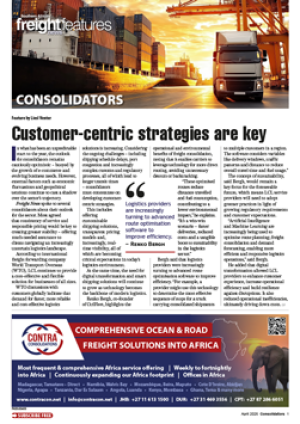Continued from page 1>
its strategic advantage as acontinental logistics distribution hub. This is compounded by the inefficiencies of our ports due to infrastructure challenges”.According to Bonnett, when the Kolwezi to Lobito link is fully functional, it will take seven to eight days to move cargo by rail, with one border post. Between Kolwezi and Durban it is anything between 30 and 35 days, going through four countries.In addition to the higher fuel costs, insurance companies charge a premium for high-value cargo going through South Africa due to the risk of theft, civil unrest and the burning of trucks.Furthermore, the industrialised world is decarbonising, despite the actions of the Trump administration. Rail between the Copperbelt and Dar es Salaam, Beira or Lobito has a much lower emission footprint than road. SA needs new approachBonnett says a “multipronged approach” is needed to ensure that South Africa retains as much of the volumes of regional imports and exports as possible. He says that while the three million tons of copper exports that could be lost is a small percentage of the cargo being carried by South African operators, it places South African exporters at a disadvantage because transport costs will increase.“What the upgrades to ports and landside links on the east and west coasts mean is that manufacturers and exporters based in Gauteng will become isolated.“It is the backhaul that is important. If you are carrying three million tons of copper out of the Copperbelt, you will want to take back three million tons of chemicals, reagents and equipment.” ER

